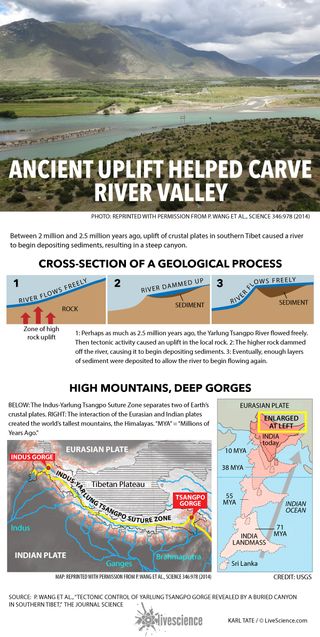How Plate Tectonics Helped Carve Tibetan Gorges (Infographic)
Infographics
By Karl Tate
published 
Between 2 million and 2.5 million years ago, uplift of crustal plates in southern Tibet caused a river to begin depositing sediments, resulting in a steep canyon.
Perhaps as much as 2.5 million years ago, the Yarlung Tsangpo River flowed freely. Then tectonic activity caused an uplift in the local rock. The higher rock dammed off the river, causing it to begin depositing sediments. Eventually, enough layers of sediment were deposited to allow the river to begin flowing again.
The Indus-Yarlung Tsangpo Suture Zone separates two of Earth’s crustal plates. The interaction of the Eurasian and Indian plates created the world’s tallest mountains, the Himalayas.
Sign up for the Live Science daily newsletter now
Get the world’s most fascinating discoveries delivered straight to your inbox.

LiveScience Infographic Artist
Karl has been Purch's infographics specialist across all editorial properties since 2010. Before joining Purch, Karl spent 11 years at the New York headquarters of The Associated Press, creating news graphics for use around the world in newspapers and on the web. He has a degree in graphic design from Louisiana State University.
More about geology
